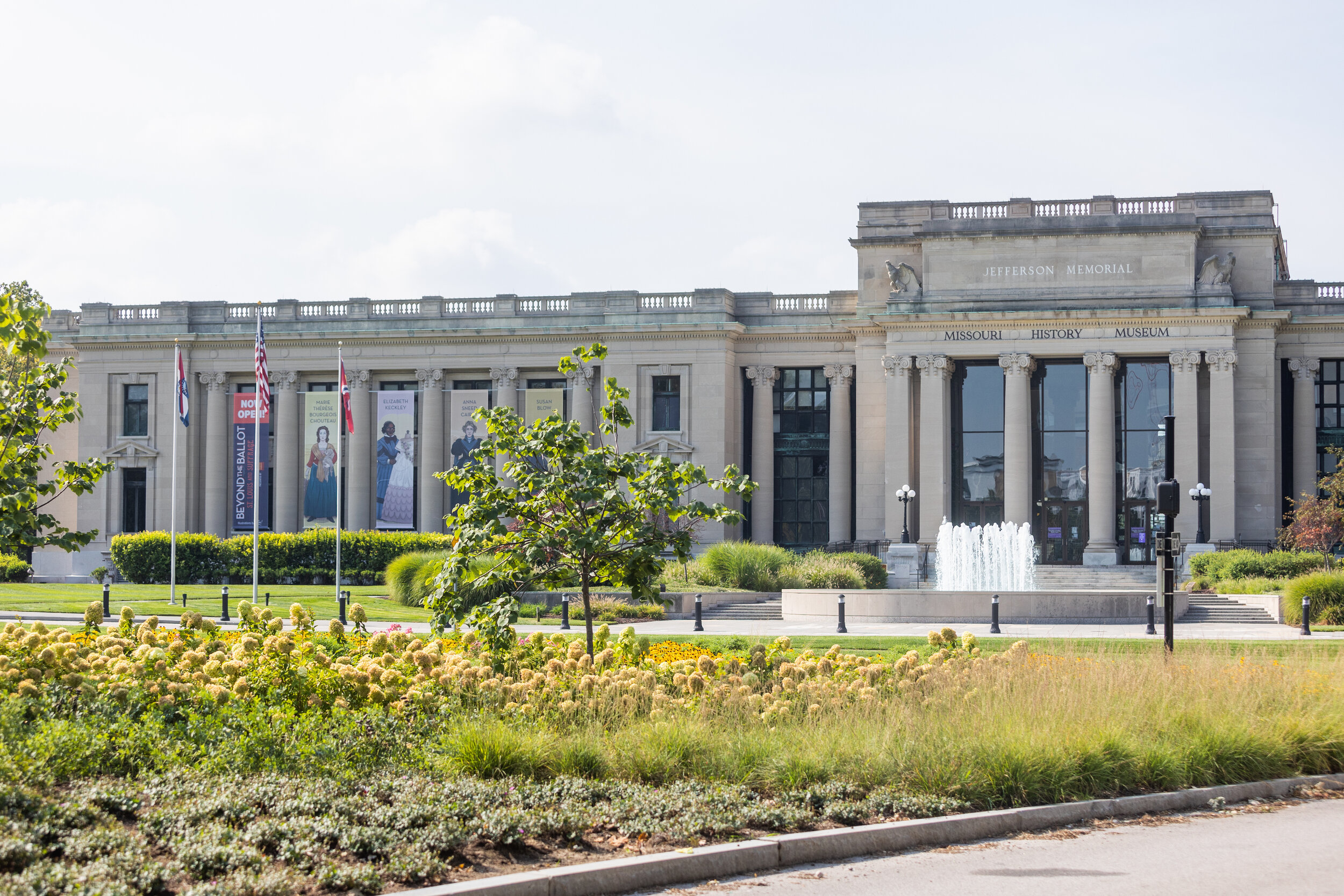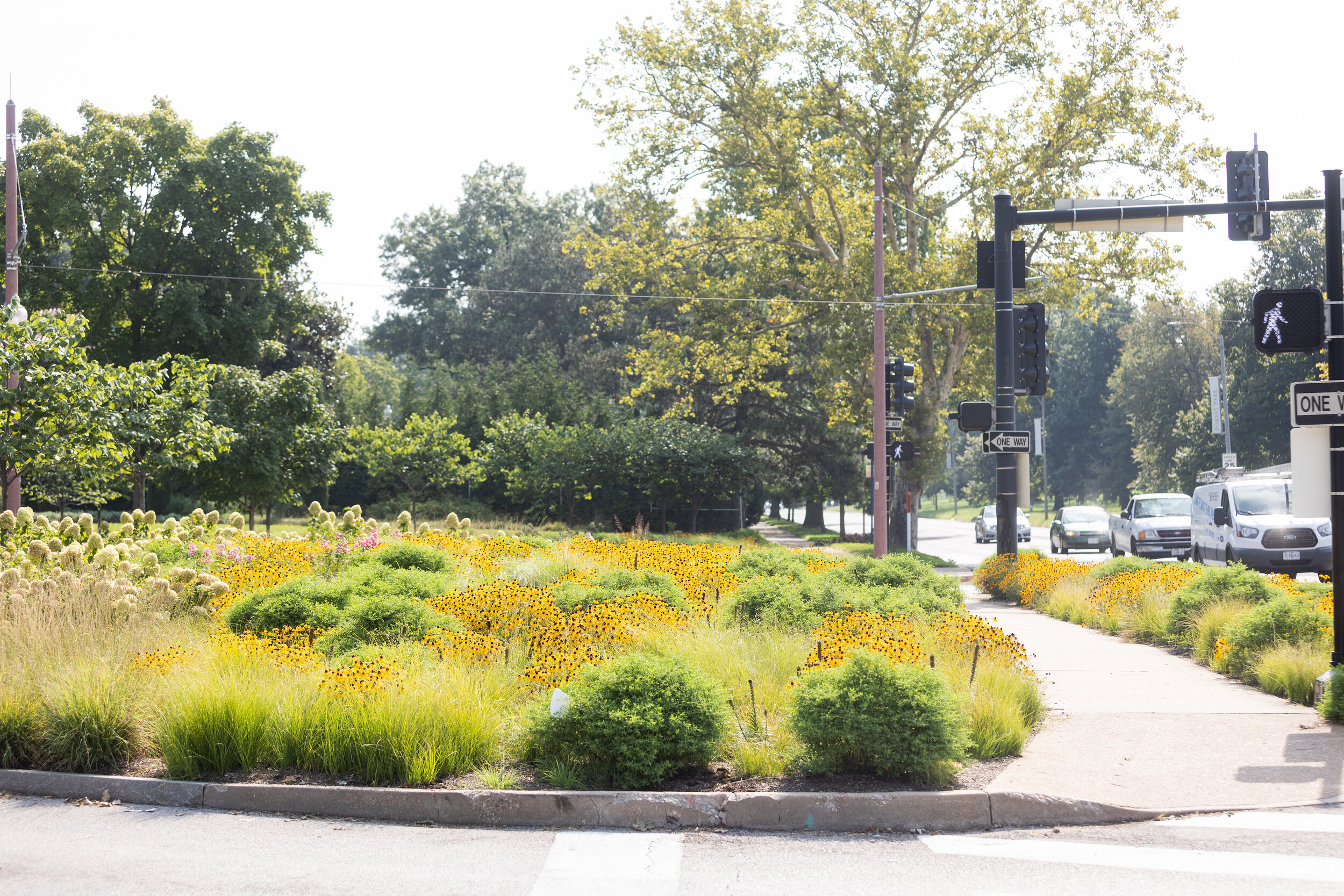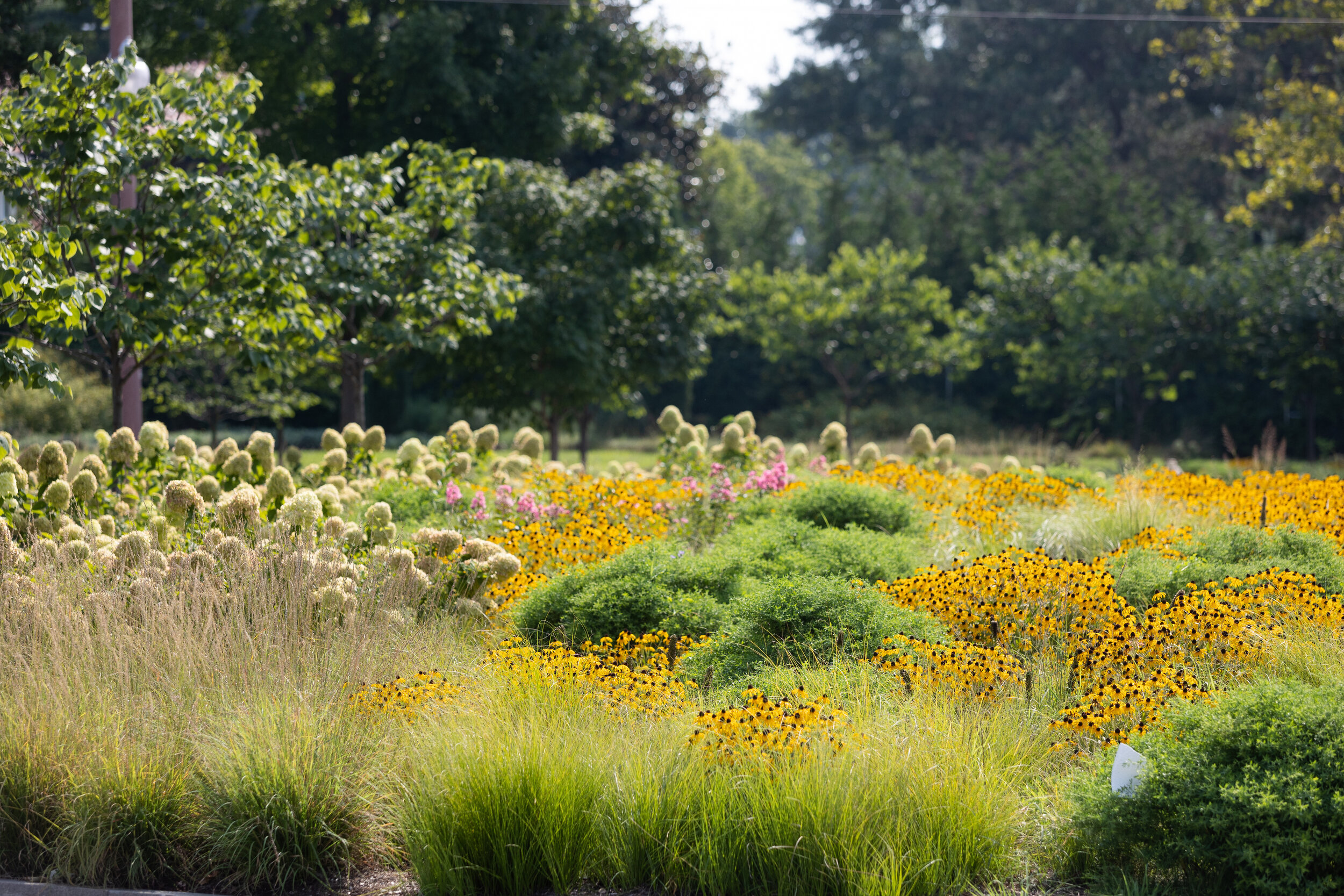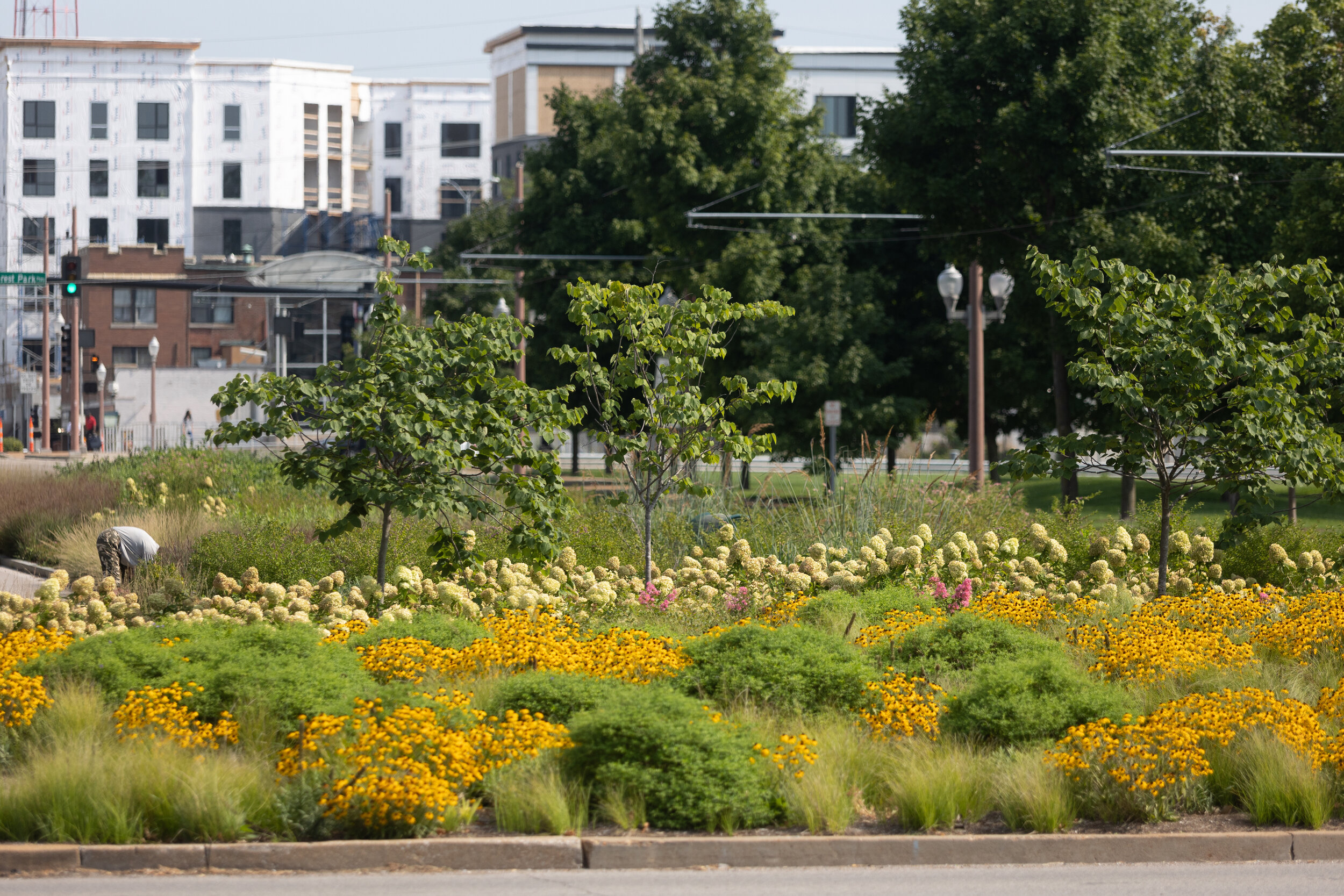History Meets Horticulture at Lindell-DeBaliviere Entrance
Visitors who approach Forest Park on DeBaliviere Avenue from the north encounter the Park’s grandest, and most historic, entrance. Today’s intersection of DeBaliviere and Lindell Boulevard is near the main entrance of the 1904 World’s Fair. During the fair, exciting, amusement-park attractions like “Creation” competed for fairgoer’s attention with historical celebrations of “Old St. Louis” and recreations of Boer War battles.
The stately Jefferson Memorial Building, built in 1913 with Fair proceeds, now dominates the vista as home of the Missouri History Museum. And thanks to the hard work of Forest Park Forever Landscape Designer/Horticulture Project Manager Justin Schmitt and the horticulture team, the entire view is framed by a new, breathtaking, and always-changing landscape.
“We took inspiration from the Hampton and Skinker entrances,” Schmitt says of his approach to reimagining the 14,000 square-foot area between Forest Park Avenue and Lindell. “Hampton has a lot of color with all its perennials and native plants, while Skinker is more formal. We wanted to combine the two approaches at DeBaliviere.”
The modern shape of today’s Lindell-DeBaliviere results from the Loop Trolley Transportation Development District and construction of Great River Greenway’s St. Vincent Greenway, which extends two miles north from Lindell DeBaliviere. However, while that work included landscape improvements on the east and west sides of DeBaliviere, they did not address the center island’s planting area. That left the large area between the north and south lanes of the street ripe for improvement.
“The center island had a large crepe myrtle patch, some grasses, and a few perennials, but a lot of it had died, creating a void,” Schmitt explains. “There was also a narrow patch of lawn that was difficult to mow, and Bermuda grass creeping in to the plantings that were there. We wanted to create a more consistent, beautiful site line from Forest Park Avenue to the Missouri History Museum.”
To accomplish his vision, Schmitt designed a multi-layered medley of plants in the north and south tips of the island. The tips blend in to more formal blocks of plantings that repeat up and down the 475-foot island. Similar plantings are repeated on the sides to tie them in with the center island.
Schmitt says the concept melds a “designed plant community” approach and more traditional “mass planting” thinking.
“With a designed plant community, we build layers of plants based on their functions, and then interplant other layers on top of each other,” Schmitt says. “Traditional mass plantings have clear separation between the different types of plants.”
The designed plant community portion of the island includes a diverse array of plants that provide color and texture. On a recent late-summer day, spiky Kobold Dwarf Liatris stood tall against soft Tollway Slender Sedge, as the bright yellow of American Goldrush Black-eyed Susans popped against the pinks and lavenders of Autumn Fire Sedum and October Skies Aromatic Aster.
And, in keeping with Schmitt’s inspiration from the Hampton and Skinker entrances, the visual and textural interests will only change, not disappear, with the seasons.
“Personally, I love late fall and winter colors,” he says. “They are more subtle but just as interesting and satisfying to me.”
For the traditional mass planting areas, Schmitt and his team matched species to unify the landscapes. The team used nearly a dozen perennial species, from Cardonna Purple Salvia to Wild Blue Indigo, to provide year-round color and interest. Structural plantings of Appalachian Red Redbud, Arnold Promise Witch Hazel, and Blue Sioux Indian Grass raise the beds’ profile well above street level.
In all, the nine-month planting project included 10 trees, 233 shrubs, 2,302 perennials, and 3,191 ornamental grasses and sedges—just in time for dramatic growth in activity near the historic intersection.
In addition to the existing MetroLink stop at Forest Park and DeBaliviere, Expo at Forest Park, a new apartment-retail development, is rising from the northwest corner. Across the street and north of the MetroLink stop, another new restaurant and residential development is under way. And the St. Vincent Greenway is poised for growth, too. Great Rivers Greenway plans to extend it all the way to the MetroLink stop at North Hanley, connecting the University of Missouri-St. Louis campus with the Lindell-DeBaliviere neighborhood.
“Forest Park Forever’s plantings are important for the St. Vincent Greenway, in part, because of their ecological value,” says Emma Klues, Vice President of Communications & Outreach for Great Rivers Greenway. “They provide habitat for plants and animals, oxygen for humans, carbon capture, and stormwater management. And, of course, they are beautiful! They create a welcoming space that people can be excited to be in and take ownership of. They give a sense of place.”
For Schmitt, another aspect of the intersection’s beauty is that the landscape, like the neighborhood itself, is alive and always changing.
“We are continually learning at this site,” Schmitt says. “Forest Park Forever members’ support allows us to try new things and adjust plans when needed for the best possible outcome. I’m excited about giving everyone who approaches the Park from the north a new experience every day.”




